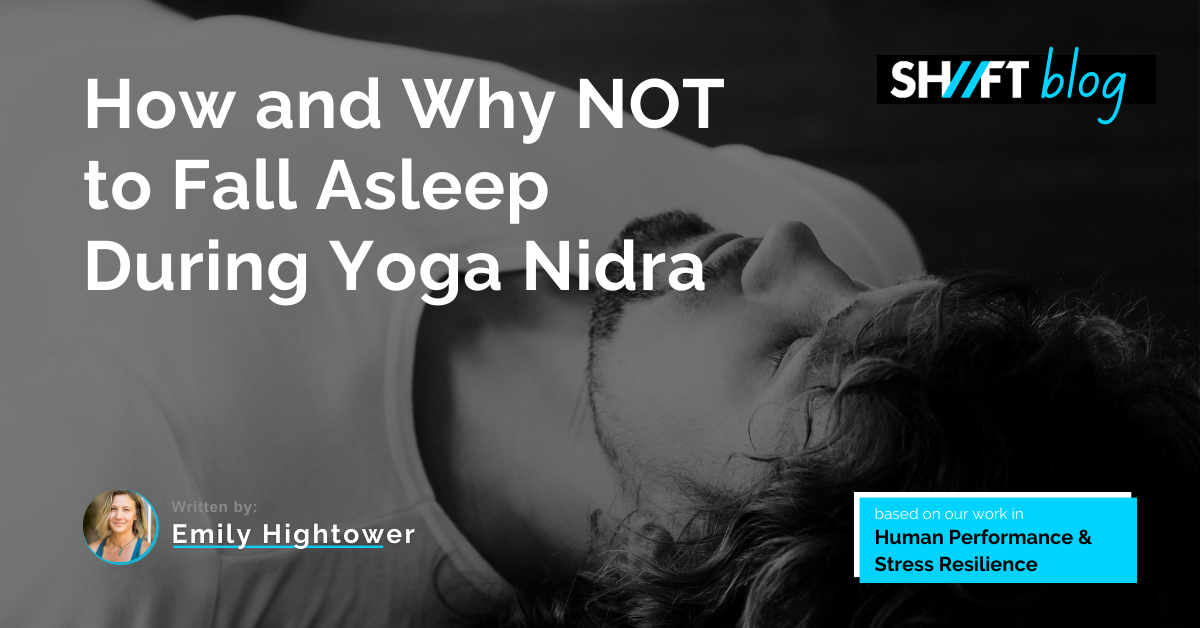If you’ve been to a group guided Yoga Nidra class, you’ve likely been jarred out of the blissful state by someone snoring nearby. Maybe you use Nidra downloads to fall asleep yourself. Any sleep seems welcome if you suffer from insomnia, however, the more you nod off during practice the more you train yourself to do so, missing the real benefits of the Yoga Nidra.
What is the Yoga Nidra Hypnagogic State?
Yoga Nidra is a guided practice that brings about the hypnagogic state, which is unique to states we encounter during actual sleep. In this state, we are semi-conscious in a dynamic rest that engages the parasympathetic nervous system in deep healing activity. Being semi-conscious allows us to participate with the healing and learn how to toggle various states of consciousness in waking life. This translates to better self-regulation and performance under stress.
Ideally, we do not fall into actual sleep during practice. Sleep has its own benefits, but regular sleep does not engage our consciousness in the way Yoga Nidra does. If you have ever been in a hypnagogic state, you know what I’m talking about. You drift in and out of hearing the guide’s voice, but you have complete awareness coursing through your body.
Why is Yoga Nidra Beneficial?
When immersed in Yoga Nidra, you are in a slow conscious condition that allows you to master your ‘observer’; the part of you that narrates your life as you live it. This observer is engaged when awareness and relaxation occur together. It is the witness we encounter in meditation. Being in touch with this aspect of ourselves is essential to self-mastery and behavioral health.
If you have patterns of reactivity or addiction, it is your observer who can disrupt that without judgment to help you see alternative response options. This part of our consciousness has an elevated perspective on our daily desires and aversions. Being connected to that invites mastery over the push and pull of our physical experience.
Withdrawing from Your Senses
Yoga Nidra is a conscious practice of withdrawing the senses from the constant game of seeking pleasure and avoiding pain. In this sensory withdrawal, we hone the ability to stay with something uncomfortable and understand that our preferences and aversions are not who we are. We can more readily choose to see things and do things that are outside our normal reactive patterns.
Sleep has its own benefits to be discussed in future posts. But it does not curate the same level of conscious, intentional healing states as Yoga Nidra. Plus, if you do fall asleep in a Nidra practice, it can create grogginess when you emerge, depending on what sleep state you fell into. The hypnagogic state will not leave you feeling groggy after practice. Usually, you’ll feel more alive awareness; a kind of calm coursing energy flowing through you.
If You Fall Asleep During Yoga Nidra
If you do fall asleep during Yoga Nidra, try practicing first thing in the morning. This is especially great if you wake up an hour before you were intending to. You have the time, and you have the ideal state of having rested all night but still not having engaged with your daily stories and stressors. You can also try Nidra in the afternoons. If you’ve mastered the state, you can practice before bed and when complete, drift into the various stages of real sleep.
Lastly, if you do fall asleep during practice, notice the conditions that put you there. Try a shorter guided session next time, or a different time of day, or after exercise when you’ve ramped up some sympathetic stress that can keep you in more of an aroused state while still welcoming the release of Nidra.
If you’re interested in exploring Yoga Nidra, look into SH//FT’s Neuro Nidra™ guided audio practices.

